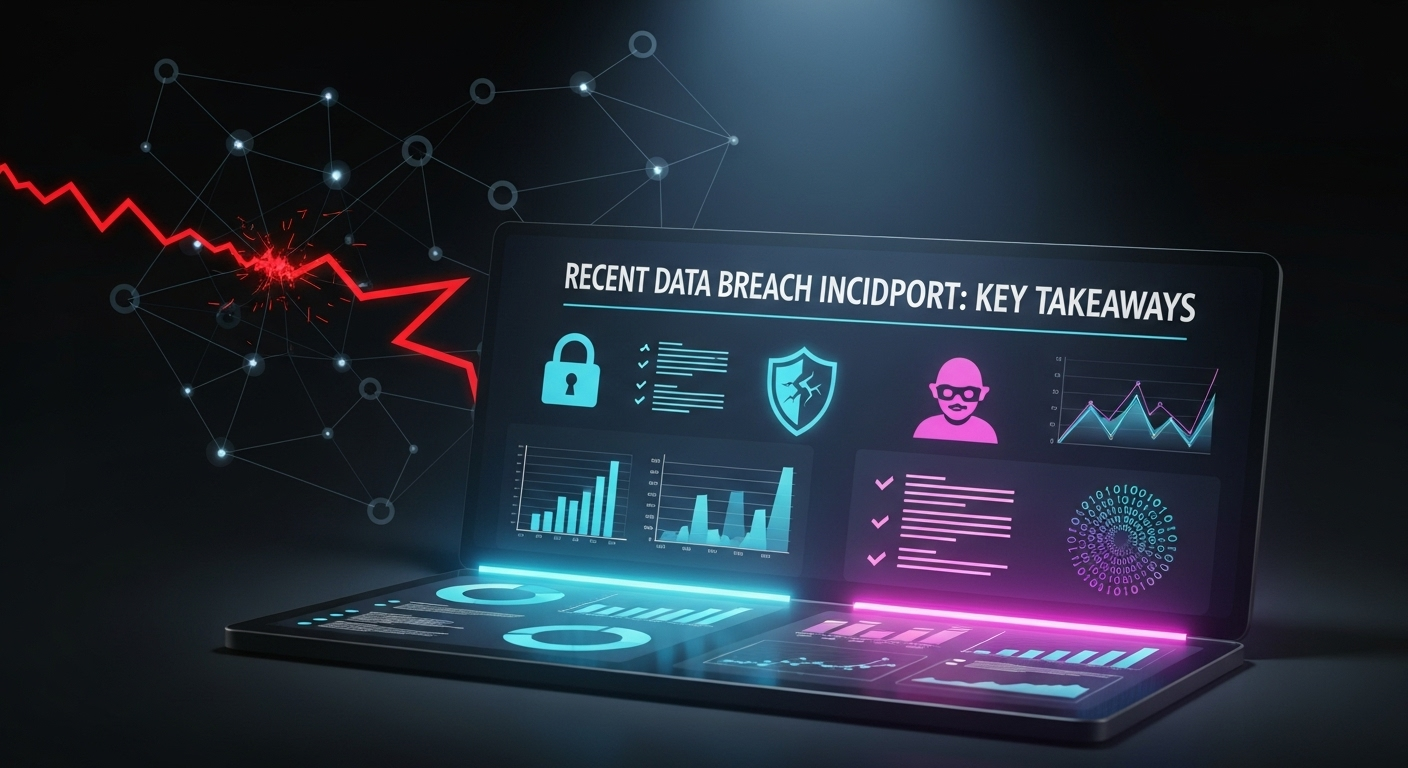In today's hyper-connected digital world, data is the new gold, and protecting it has become one of the most critical challenges for individuals and organizations alike. The steady stream of headlines announcing massive security failures serves as a constant, sobering reminder of our vulnerability. A comprehensive recent data breach incidents report reveals a landscape where cyber threats are not only increasing in frequency but are also evolving in their sophistication and impact. Understanding the patterns, tactics, and consequences outlined in these reports is no longer just an IT concern; it is a fundamental aspect of modern business strategy and personal digital hygiene. This analysis will delve into the key takeaways from the latest findings, offering a clear-eyed view of the current threat environment and providing actionable insights for robust defense. The Evolving Landscape of Cyber Threats The digital threat landscape is in a state of perpetual motion, with cybercriminals constantly innovating their methods to bypass security measures. The days of simple, opportunistic viruses are largely behind us. Today's attacks are often highly targeted, well-funded, and executed with a level of precision that rivals state-level intelligence operations. One of the most significant trends is the weaponization of artificial intelligence (AI) and machine learning (ML). Attackers are leveraging AI to automate the discovery of vulnerabilities, create more convincing phishing emails at scale, and even mimic the communication styles of trusted individuals to deceive employees, a technique known as deepfake social engineering. This technological arms race means that defensive strategies must also evolve. Traditional, signature-based antivirus software is no longer sufficient to counter AI-driven threats that can change their digital fingerprint in real-time. Modern cybersecurity now relies on a proactive approach centered around behavioral analysis, threat intelligence, and zero-trust architecture. A zero-trust model operates on the principle of "never trust, always verify," requiring strict identity verification for every person and device trying to access resources on a private network, regardless of whether they are sitting inside or outside the network perimeter. This shift from a castle-and-moat security model to a more granular, identity-centric approach is a direct response to the increasingly sophisticated and pervasive nature of modern cyberattacks. Furthermore, the very definition of a "target" has expanded. It's not just about stealing credit card numbers anymore. Cybercriminals are now targeting intellectual property, sensitive research data, critical infrastructure controls, and personal health information—data that can be ransomed, sold for corporate espionage, or used to disrupt entire societies. The rise of the Internet of Things (IoT) has exponentially increased the attack surface, turning everything from smart refrigerators to industrial sensors into potential entry points for attackers. This complex and interconnected web of devices demands a holistic and vigilant security posture that accounts for every potential vulnerability, no matter how small. Analysis of Major Data Breach Incidents in 2023-2024 Examining specific incidents from the past year provides a concrete understanding of the theoretical threats. These high-profile breaches serve as cautionary tales, highlighting common vulnerabilities and the devastating consequences of a successful attack. Each incident offers unique lessons on attack vectors, attacker motives, and defensive gaps. The MOVEit Transfer Hack: A Supply Chain Catastrophe One of the most widespread and impactful security events was the exploitation of a zero-day vulnerability in the MOVEit Transfer managed file transfer software. This was not a direct attack on a single company but a classic supply chain attack. The Clop ransomware gang discovered and exploited a critical flaw in the software, allowing them to access and exfiltrate data from hundreds of organizations that used MOVEit to transfer large, often sensitive, files. The list of victims included major government agencies, leading universities, and global corporations across various sectors. The MOVEit incident underscores the critical importance of third-party risk management. An organization's security is only as strong as its weakest link, and that link is often a vendor or a piece of third-party software. This breach demonstrated how a single vulnerability in a widely used product can have a catastrophic ripple effect, compromising data for millions of individuals who had never even heard of MOVEit. The key takeaway here is the need for rigorous vetting of all software and service providers, continuous monitoring of supply chain partners, and having a plan in place to rapidly respond to vulnerabilities discovered in third-party products. The 23andMe Credential Stuffing Attack: Personal Data at Risk The breach at the genetic testing company 23andMe highlighted a different but equally dangerous attack vector: credential stuffing. In this type of attack, criminals do not breach the target company's servers directly. Instead, they take lists of usernames and passwords stolen from previous breaches at other websites and use automated bots to "stuff" them into the login forms of the target site. The attack succeeds when users have reused the same password across multiple services. In the case of 23andMe, attackers gained access to a small number of accounts directly and then used a feature to scrape data from thousands of other users who were connected through the "DNA Relatives" feature. This incident is a stark reminder of two critical security principles. For users, the importance of unique, strong passwords for every online account cannot be overstated. Using a password manager is the most effective way to achieve this. For companies, relying solely on a password for authentication is no longer sufficient. Implementing multi-factor authentication (MFA), which requires a second form of verification (like a code from a phone app), provides a crucial layer of security that would have stopped this type of attack in its tracks. The highly sensitive nature of the stolen data—genetic ancestry and health information—also raises profound questions about data privacy and the long-term implications of such breaches. Ransomware Hits Major Corporations and Public Services Ransomware continued its reign of terror, evolving with a tactic known as double extortion. Attackers no longer just encrypt a victim's files and demand a ransom to unlock them. Now, they also exfiltrate large amounts of sensitive data before deploying the ransomware. If the victim refuses to pay the decryption ransom, the





